How a freeloading worm might help us live healthier, longer lives
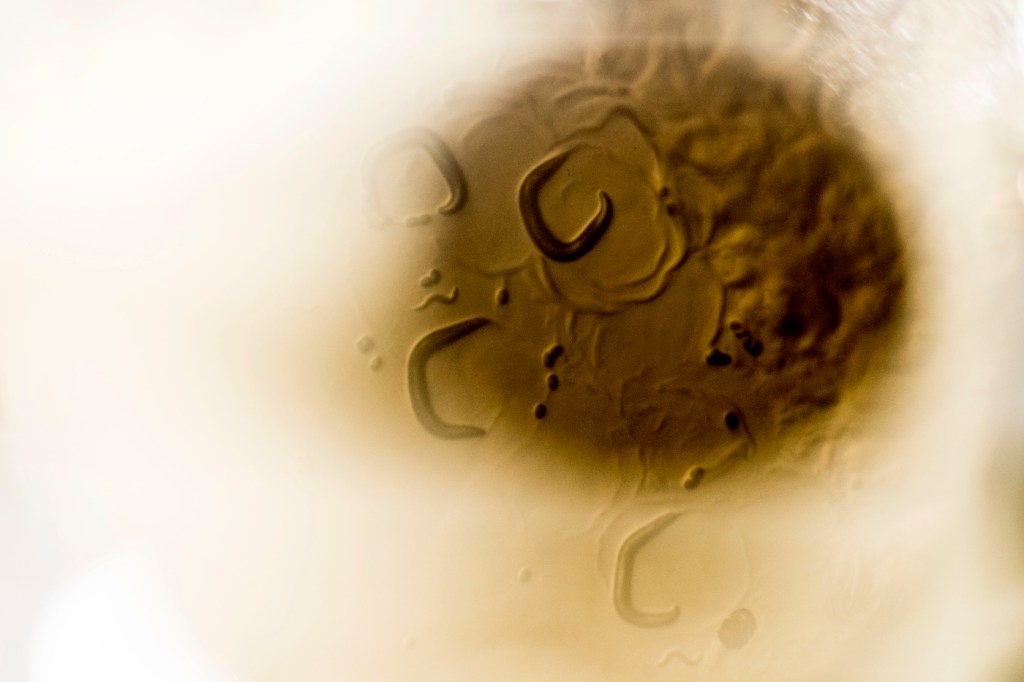
Life at the microbial scale is full of hazards. Microscopic organisms need to be ready to protect themselves from compounds that can break down cell walls or disrupt the processes they need to survive.
But all that vigilance comes at a cost. It requires energy. It’s stressful. According to researchers at Northeastern, a small worm known as Caenorhabditis elegans has evolved a way to take the easy road and freeload off of the protection provided by nearby bacteria.
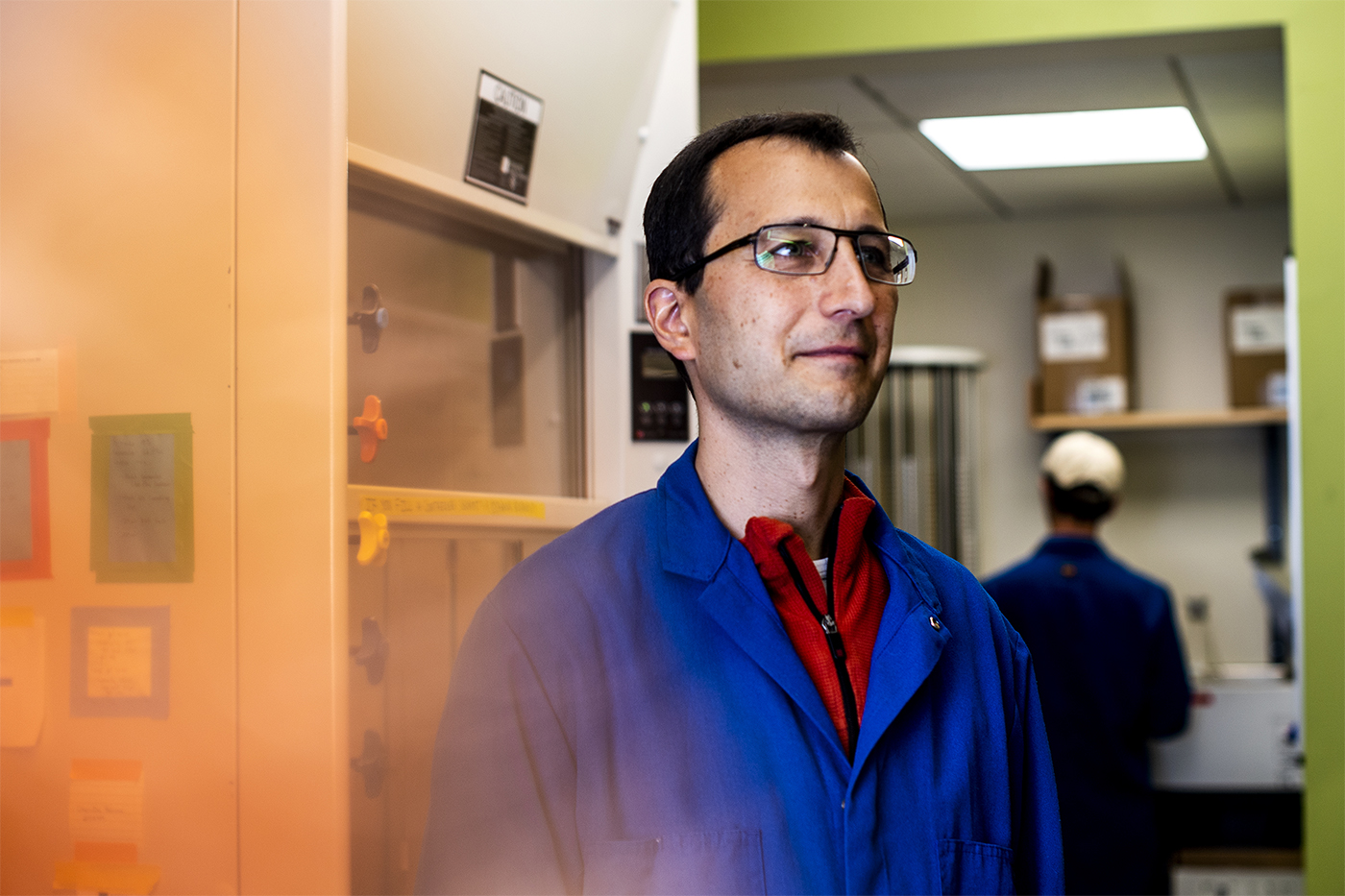
Javier Apfeld is an assistant professor of biology in the College of Science at Northeastern. Photo by Ruby Wallau/Northeastern University
“There’s a lot of evidence that if the worms turn on these defenses too much, it can actually disrupt some of the cell signaling that they need to grow and function normally,” says Jodie Schiffer, a doctoral student at Northeastern and lead author on the study, which was published in eLife. “So it’s metabolically and energetically, and from a cell signaling perspective, safer to keep these things off unless they absolutely need it.”
C. elegans, a transparent little worm found in decomposing plant material and soil, is what researchers call a “model organism.” This means that it is extremely useful for learning about processes that might be applicable to humans down the road—it was the first multicellular organism to have its whole genome mapped. By manipulating those genes and other aspects of the worm, researchers can understand how different mechanisms help it survive and, potentially, how similar mechanisms might function in humans.
“And that’s the really powerful thing about a microscopic worm,” Schiffer says.
Schiffer is studying C. elegans with Javier Apfeld, an assistant professor of biology at Northeastern, to find ways to help ease the effects of ageing in humans. (The door to their lab is marked with a sign reading “Worm Immortality Team.”) This most recent work focuses on how particular neurons in the worm’s brain dictate how it responds to stress.
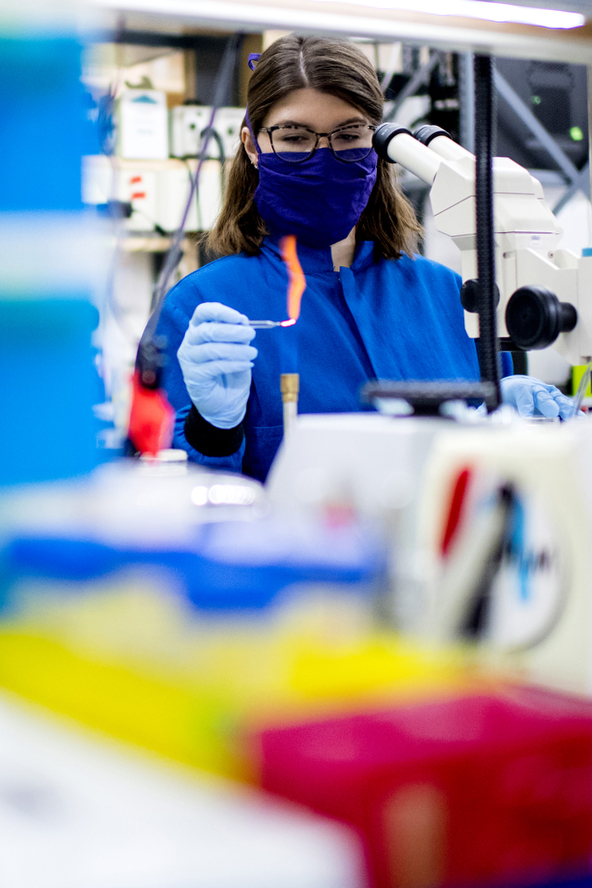
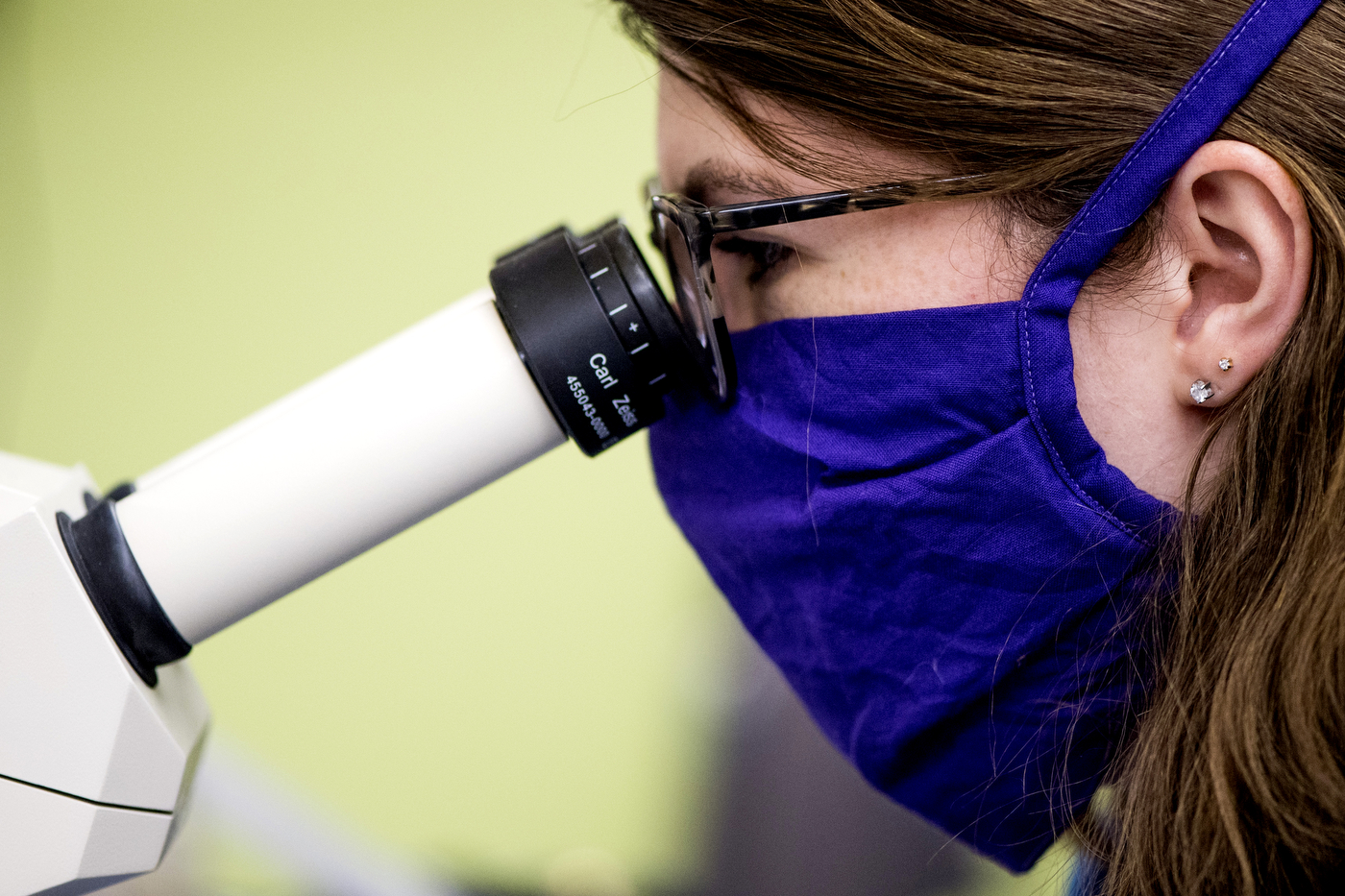

“The signals from the brain that regulate resistance to stress also regulate lifespan—how long the worms live in the absence of stress,” Apfeld says. “We think that ultimately learning about the stress responses will help us understand why these organisms like worms and mice and flies, and perhaps humans, have this kind of latent capacity to live much longer than they normally do.”
So what, in particular, stresses out C. elegans? Hydrogen peroxide. That’s right—the same stuff my mom (and maybe yours) used to pour on childhood scrapes. For microbes, hydrogen peroxide is a weapon of war. It reacts easily with other molecules, disrupting important processes and breaking down cell walls.
“All sorts of creatures use hydrogen peroxide to kill each other,” Apfeld says. “And because of that, they have lots of enzyme systems that are very conserved to repair the damage from hydrogen peroxide or to destroy hydrogen peroxide in the first place.”
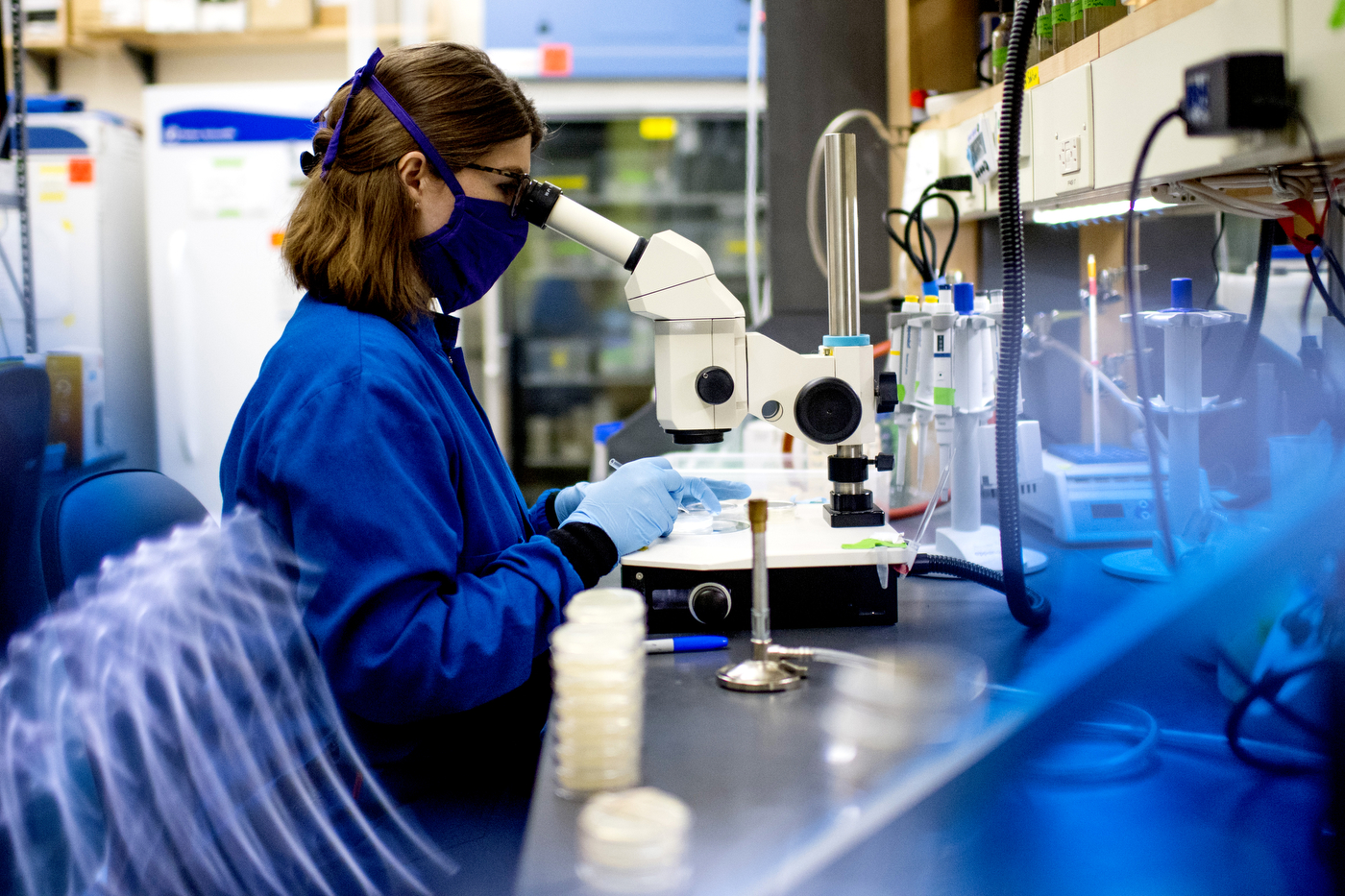
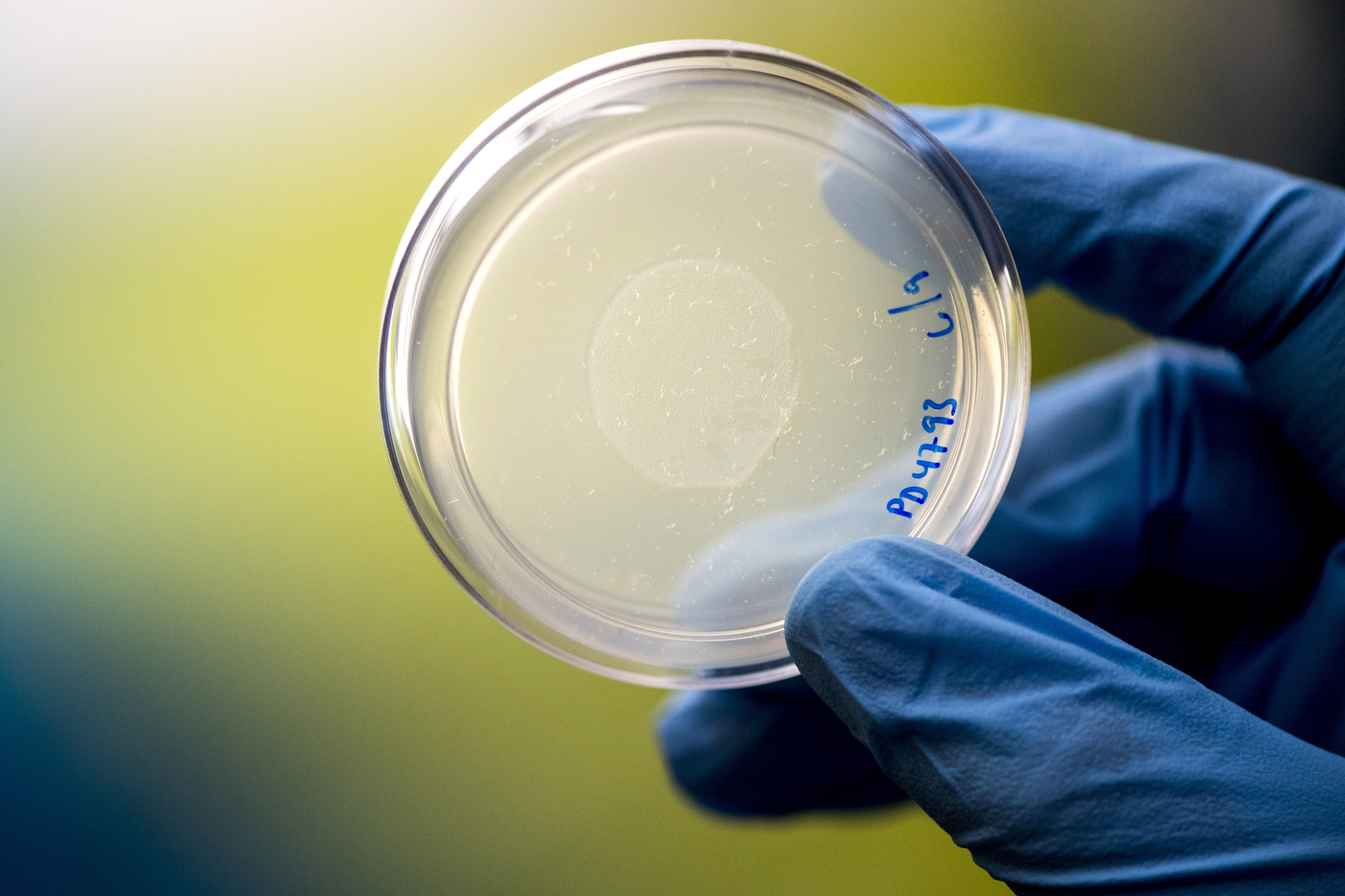
C. elegans is able to produce enzymes called catalases, which convert hydrogen peroxide into harmless water and oxygen gas. Our cells produce catalases as well—when you see hydrogen peroxide fizzing and bubbling in a cut, you’re watching this chemical reaction in real time. But C. elegans doesn’t always bother to protect itself, the researchers found. If it is surrounded by food, it turns off the system that creates catalases.
“Why would the animal turn off its defenses when it senses food?” Apfeld asks. “It turns out that the reason that the worms turn off their own protection when they smell food is because the food, the bacteria that they eat, is also very good at degrading peroxide.”
In the lab, C. elegans’ primary source of food is Escherichia coli bacteria, better known as E. coli. And this bacteria protects itself from hydrogen peroxide using the same mechanism as the worm—producing catalases. When the worm’s neurons sense E. coli, the circuit it uses to produce its own catalases shuts down. (And then it eats the E. coli. How’s that for a thank you?)
“C. elegans can take care of itself, but we found that it needs to think that there is no food in the environment in order to do so,” Schiffer says.
This response could provide clues as to how humans coordinate our own cellular defense systems. Theoretically, Schiffer says, we might be able to manipulate our defense mechanisms in the future to help us live healthier, and perhaps longer, lives.
For media inquiries, please contact media@northeastern.edu.





